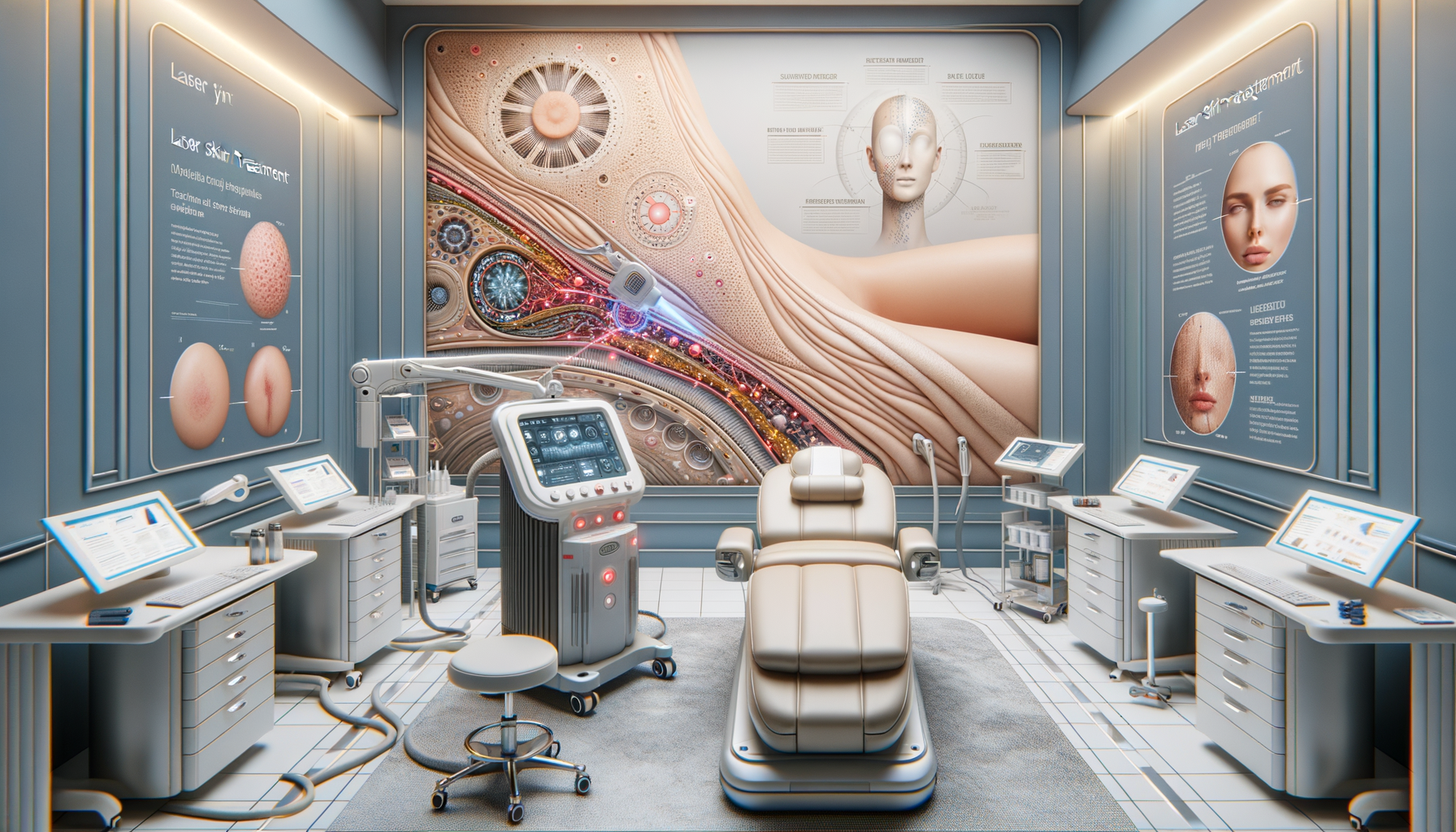5 Expert Laser Skin Treatments That Can Transform Your Look
Introduction to Laser Skin Treatments In recent years, laser skin treatments have surged in popularity, offering solutions for a variety of skin concerns. These treatments utilize focused light technology to address issues ranging from acne scars to aging signs, promising rejuvenated and smoother skin. As technology advances, the effectiveness and safety of laser treatments continue

Introduction to Laser Skin Treatments
In recent years, laser skin treatments have surged in popularity, offering solutions for a variety of skin concerns. These treatments utilize focused light technology to address issues ranging from acne scars to aging signs, promising rejuvenated and smoother skin. As technology advances, the effectiveness and safety of laser treatments continue to improve, making them a go-to option for many seeking non-invasive cosmetic solutions.
Laser skin treatments are not just about aesthetics; they also provide medical benefits, such as treating rosacea and reducing the visibility of birthmarks. Understanding the different types of laser treatments available can help individuals make informed decisions about their skincare routine.
Understanding Different Types of Laser Treatments
Laser skin treatments come in various forms, each designed to target specific skin issues. Among the most common are ablative and non-ablative lasers. Ablative lasers work by removing the outer layers of skin, which can be effective for treating deep wrinkles, scars, and sun damage. Non-ablative lasers, on the other hand, work beneath the surface of the skin, promoting collagen growth and tightening the skin without damaging the top layer.
Another popular option is fractional laser treatment, which targets a fraction of the skin at a time, allowing for quicker recovery and less downtime. This method is often used for treating fine lines, sun damage, and uneven skin tone. Each type of laser treatment has its own set of benefits and considerations, making it essential for individuals to consult with a dermatologist to determine the most suitable option for their skin type and concerns.
Benefits of Laser Skin Treatments
Laser skin treatments offer numerous benefits that extend beyond aesthetic improvements. One of the primary advantages is the precision with which these treatments can target specific skin issues, minimizing damage to surrounding tissues. This precision leads to reduced recovery times and fewer side effects compared to more invasive procedures.
Additionally, laser treatments can stimulate collagen production, which is crucial for maintaining skin elasticity and reducing the appearance of fine lines and wrinkles. The ability to customize treatments based on individual needs and skin types further enhances their appeal, providing tailored solutions for optimal results.
Potential Risks and Considerations
While laser skin treatments are generally safe, they do carry some risks and considerations. Common side effects include redness, swelling, and temporary discomfort, which usually subside within a few days. However, more serious complications, such as scarring or changes in skin pigmentation, can occur, particularly if the treatment is not performed by a qualified professional.
It’s crucial for individuals to discuss their medical history and any skin conditions with a dermatologist before undergoing laser treatment. Proper pre-treatment and post-treatment care are also essential to minimize risks and ensure the best possible outcomes. Following the recommended guidelines and choosing a reputable clinic can significantly reduce the likelihood of adverse effects.
Choosing the Right Laser Treatment for You
Selecting the right laser treatment involves considering several factors, including skin type, the specific skin issue being addressed, and personal preferences regarding downtime and recovery. Consulting with a certified dermatologist is the first step in the decision-making process, as they can provide expert advice and recommend the most suitable treatment options.
It’s also important to have realistic expectations about the results and understand that multiple sessions may be required to achieve the desired outcome. By thoroughly researching and discussing all available options, individuals can make informed decisions that align with their skincare goals and lifestyle.
Conclusion
Laser skin treatments have revolutionized the approach to skincare, offering effective solutions for a wide range of concerns. With advancements in technology, these treatments provide both aesthetic and medical benefits, helping individuals achieve healthier, more radiant skin. By understanding the different types of treatments and potential risks, and by consulting with a skincare professional, individuals can make informed choices that enhance their natural beauty and confidence.